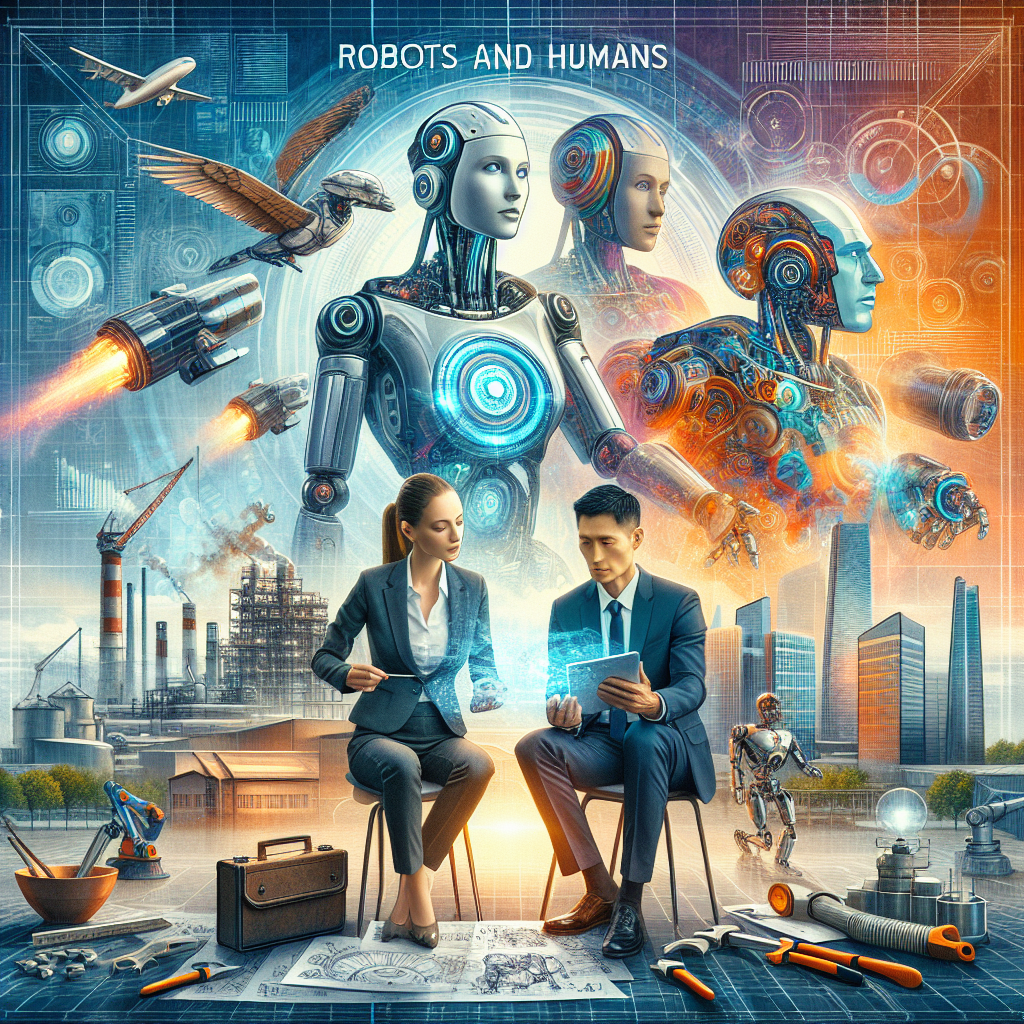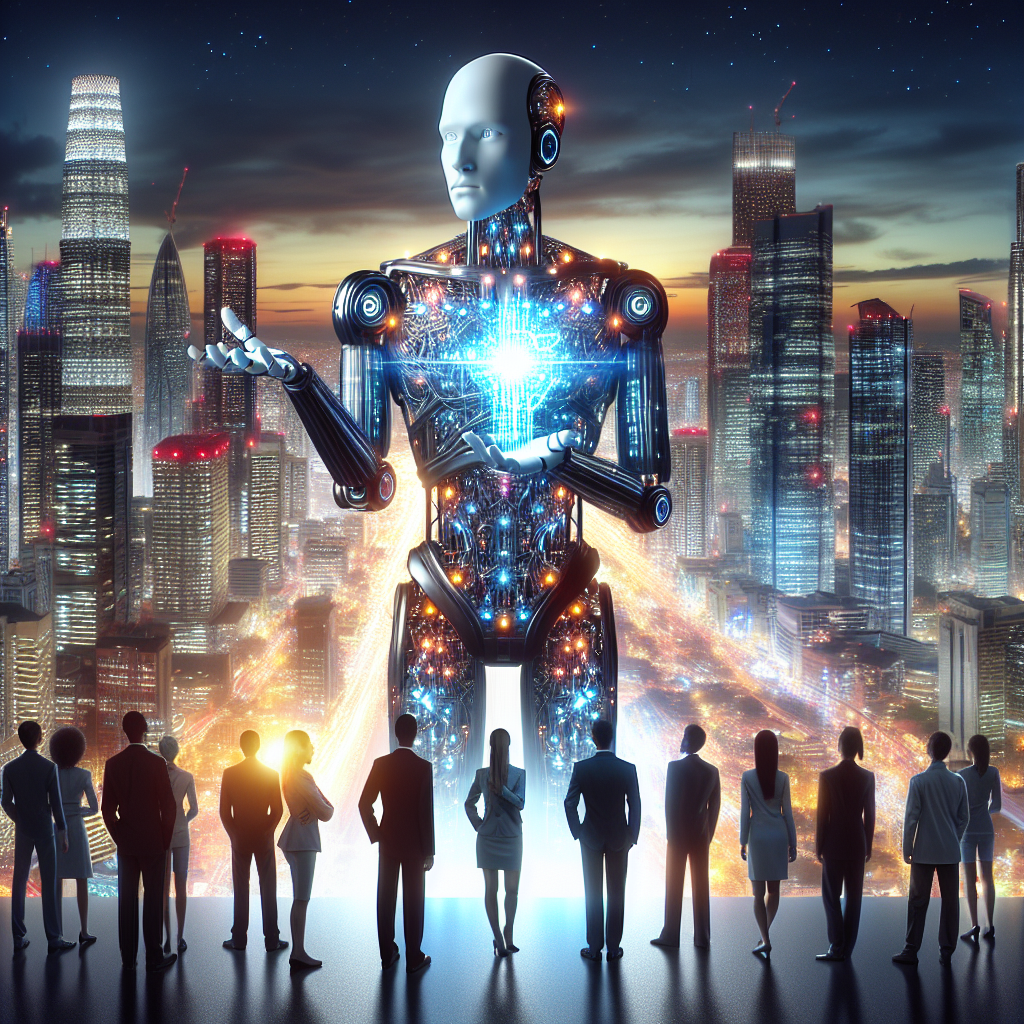As we stand on the brink of a technological revolution, the integration of robots into various sectors of the economy is both promising and perplexing. For decades, robots have been depicted as either harbingers of doom—stealing jobs from the human workforce—or as marvels of engineering destined to save us from mundane tasks. However, a new narrative is emerging: one of collaboration. The partnership between humans and robots is paving the way for a new era of job creation, optimism, and unprecedented efficiency.
The Evolution of Work
The workplace has undergone significant transformations throughout history. From the advent of the steam engine to the digital revolution, technological advancements have always redefined the landscape of employment. The latest wave of innovation stems from the rise of robotics and artificial intelligence (AI). While fears of job displacement are valid, it’s crucial to recognize the potential for these technologies to create new opportunities.
Historically, as specific jobs became obsolete, new ones emerged that demanded different skills. For instance, the rise of automation in manufacturing led to a demand for technicians, engineers, and software developers who could design, maintain, and improve these systems. Similarly, the collaboration between humans and robots is likely to give rise to entirely new industries and job categories, fundamentally reshaping the labor market.
Collaborative Workspaces: A New Paradigm
In settings such as factories, warehouses, and even hospitals, robots are no longer confined to performing menial tasks in isolation. Collaborative robots, or cobots, are designed to work alongside humans, enhancing productivity and ensuring safety. For instance, in automotive manufacturing, robots can take over repetitive assembly tasks, allowing human workers to focus on quality control and problem-solving. This symbiotic relationship improves efficiency while giving employees the opportunity to apply their critical thinking and creativity in more meaningful ways.
Furthermore, the emergence of AI-driven tools is augmenting human capabilities. From advanced data analysis to predictive modeling, these technologies empower workers to make informed decisions quickly. By offloading routine tasks to machines, employees can invest their time in higher-value work that requires emotional intelligence, creativity, and strategic thought—traits that robots are far from mastering.
Upskilling and Reskilling: A Workforce Prepared for Tomorrow
The collaboration between humans and robots also necessitates a shift in how we think about education and training. To thrive in a rapidly evolving job landscape, there is a growing need for upskilling and reskilling initiatives. Governments, educational institutions, and businesses must come together to create programs that equip employees with the skills necessary to navigate a technology-enhanced workplace.
For example, industries such as healthcare are seeing a demand for workers who can manage robotic surgical assistants or AI-based diagnostic tools. As automation takes over more routine tasks, jobs will increasingly require human workers to understand and manage advanced technologies, requiring lifelong learning and adaptability.
New Industries and Job Creation
Beyond merely complementing existing jobs, robots and AI are catalysts for entirely new industries. The development of autonomous vehicles has spurred growth in sectors like logistics and transportation, creating a plethora of roles that range from software development to fleet management. The renewable energy sector, too, is expanding rapidly, with robots playing a vital role in efficiency and maintenance.
Additionally, the demand for robotics engineers, AI specialists, and machine learning experts continues to surge. The backbone of this new economy is innovation, and as companies invest in research and development, they create a ripple effect of job opportunities for a diverse range of professionals.
Addressing Concerns and Ethical Implications
Though the benefits of human-robot collaboration are evident, it’s essential to address the challenges and ethical implications that arise. Workplaces must prioritize the well-being of employees, ensuring that the integration of robotics does not compromise job security or workplace dignity. Open dialogue about these changes is crucial, as is the establishment of policies that safeguard workers against potential inequities exacerbated by technology.
Furthermore, discussions surrounding the ethical use of AI and robots need to take center stage. Ensuring fairness, transparency, and accountability in the development and deployment of these technologies will build public trust and enable successful collaboration.
Conclusion: Embracing a Collaborative Future
As we embrace this new era of job creation, it’s crucial to focus on collaboration rather than competition between humans and robots. By harnessing the unique strengths of both parties, we can build a future that maximizes productivity while fostering creativity, problem-solving, and job satisfaction. The journey will require commitment from all stakeholders—business leaders, workers, policymakers, and educators—to cultivate an ecosystem that promotes continuous learning, ethical standards, and mutual respect.
In this evolving landscape, the question is not whether robots will take our jobs, but rather how we will adapt and thrive alongside them. In the end, the fusion of human ingenuity and robotic precision could lead us to a brighter, more innovative workforce. The possibilities are limitless, and together, humans and robots can engineer a promising future.




